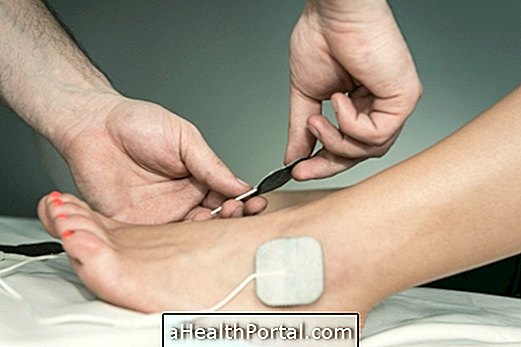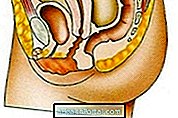Electroneuromyography (ENMG) is an examination that assesses the presence of injuries affecting nerves and muscles, as can occur in diseases such as amyotrophic lateral sclerosis, diabetic neuropathy, carpal tunnel syndrome or guillain-barré disease, for example, being important to help the doctor confirm the diagnosis and plan the best treatment.
This test is able to record the conduction of an electrical impulse on a nerve and evaluate the activity of the muscle during a given movement, and usually the lower or upper limbs, such as legs or arms, are evaluated. For this, the examination is carried out in 2 stages:
- Electroneurography : Small sensors are strategically placed on the skin to assess certain muscles or pathways of nerves, and then small electrical stimuli are made to produce activities in these nerves and muscles that are picked up by the device. This stage can cause discomfort similar to small strokes, but they are bearable;
- Electromyography : A needle-shaped electrode is inserted into the skin until it reaches the muscle, to directly assess the activity. To do this, the patient is asked to perform some movement while the electrode detects the signals. At this stage, there is a stinging pain during insertion of the needle, and there may be discomfort during the examination, which is tolerable.
The examination of electroneuromiography is done by the doctor, and is available in hospitals or specialized clinics. This exam is done free of charge by the SUS and covered by some health plans, or it can be done in a private way, costing an average of R $ 300 reais, which is quite variable according to the place where it is performed.

What is it for
The examination of electroneuromyography studies the functioning of nerves and muscles, which may be altered in situations such as:
- Polyneuropathy caused by diabetes or by some inflammatory disease. Learn what diabetic neuropathy is and how to treat it;
- Progressive muscle atrophy;
- Herniated disc or other radiculopathies, which cause lesions on the spinal nerves. Know what a radiculopathy and its causes are;
- Carpal tunnel syndrome. Learn how to identify and treat this syndrome;
- Facial paralysis;
- Amyotrophic lateral sclerosis. Understand what amyotrophic lateral sclerosis is;
- Polio;
- Change in strength or sensitivity caused by a trauma or blow;
- Muscular diseases such as myopathies or mucous dystrophies.
With the information obtained during the examination, the doctor can confirm the diagnosis, indicate the best forms of treatment or, in some cases, monitor the severity and evolution of the disease.
How to prepare for the exam
In order to perform the electromyography, it is recommended to attend the well-fed exam site and wear loose or easily removed clothing, such as skirts or shorts. Oils or moisturizers should not be used in the 24 hours prior to the examination because these cosmetics may make it difficult for the electrodes to stick.
It is important to tell the doctor if you use medicines, as some, such as anticoagulants, may interfere with or contraindicate the test. In addition, it should be remembered that electroneuromyography is usually done on both sides (both legs or arms), because it is important to compare the changes found between the affected side and the healthy side.
There are no permanent effects after the examination, so it is possible to return to normal daily activities.
Who should not do
Electroneuromyography does not pose a health hazard, however, it is contraindicated for people who use a heart pacemaker or who use anticoagulant drugs, such as warfarin, Marevan or Rivaroxaban. In these cases, the doctor should be informed, who will evaluate the contraindication or what kind of treatment can be done.







-o-que--sintomas-e-tratamento.jpg)

















